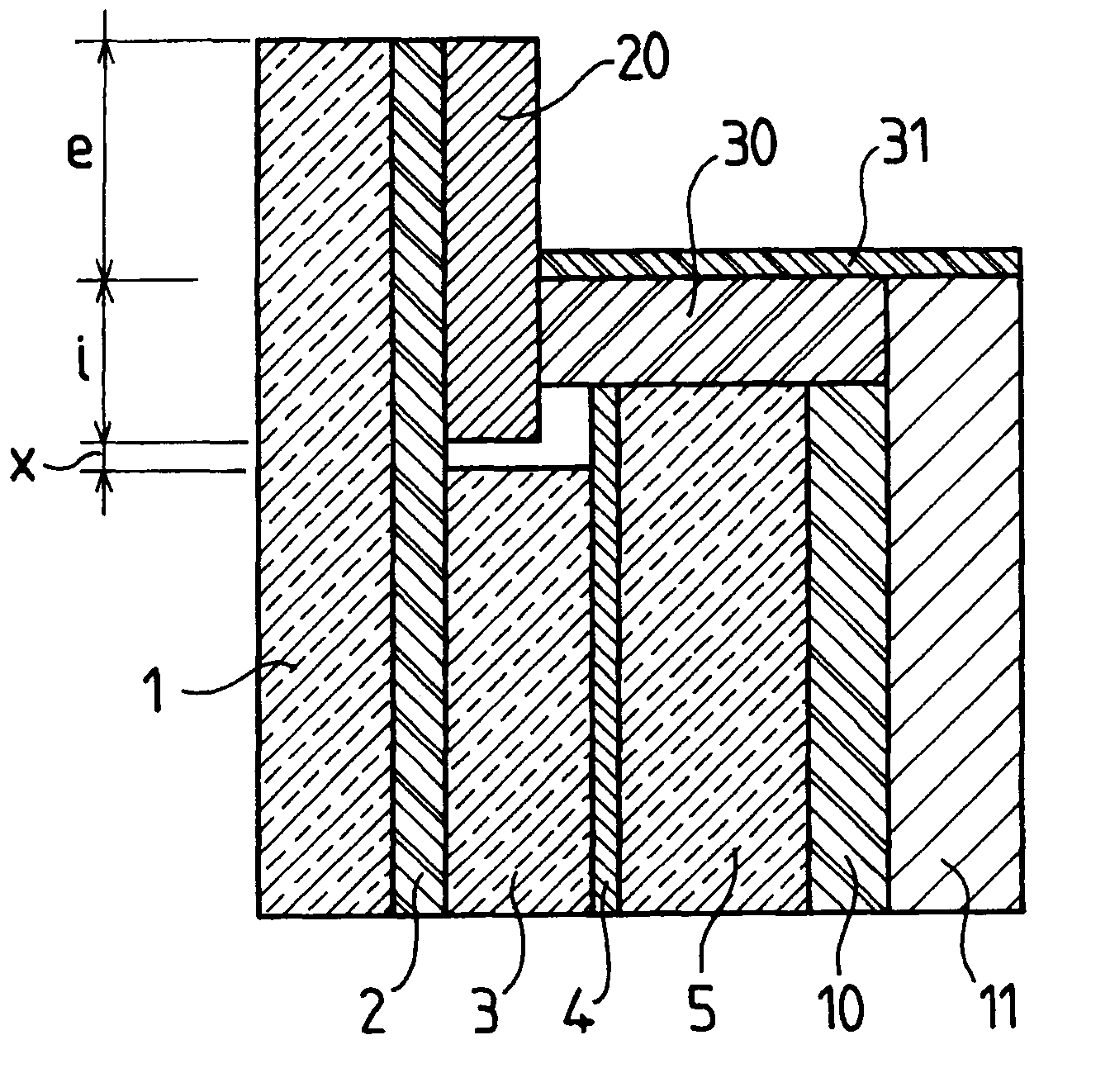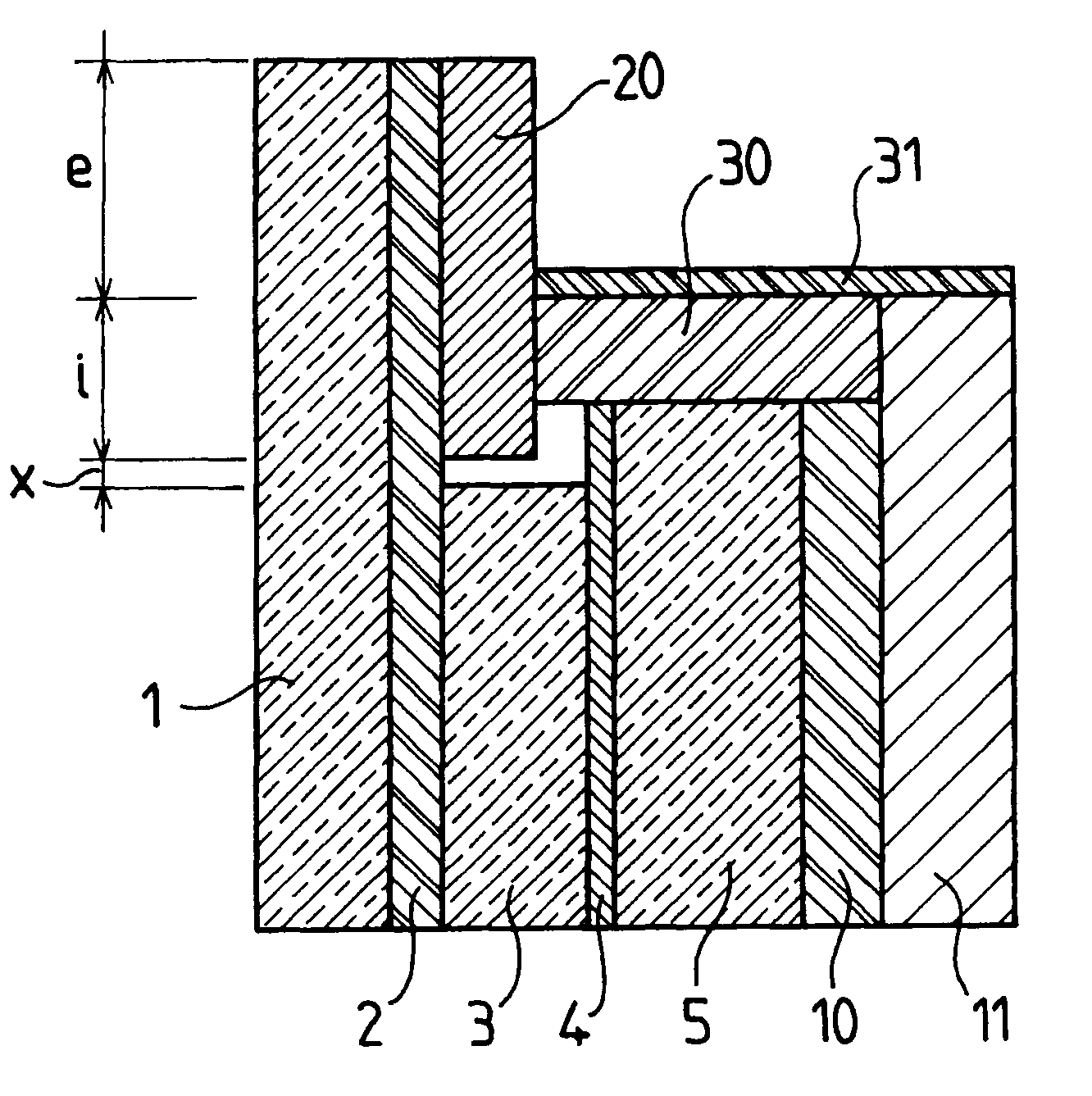Ballistic resistant laminated structure
a laminated structure, ballistic resistance technology, applied in the direction of armour plates, offensive equipment, armoured vehicles, etc., can solve problems such as damage inside the vehicl
- Summary
- Abstract
- Description
- Claims
- Application Information
AI Technical Summary
Benefits of technology
Problems solved by technology
Method used
Image
Examples
example
[0036]The glazing shown in the FIGURE comprises:[0037]a chemically toughened soda-lime-silica glass sheet (1) measuring 404×404 mm with a thickness of 4 mm;[0038]a chemically toughened soda-lime-silica glass sheet (3) measuring 332×332 mm and having a thickness of 3 mm;[0039]a chemically toughened soda-lime-silica glass sheet (5) measuring 346×346 mm and having a thickness of 6 mm; and[0040]a polycarbonate sheet (11) measuring 364×364 mm and having a thickness of 3 mm.
[0041]These sheets are all centered with respect to one another so that the edges of the sheet (3) are, on all sides, set back by 36 mm from those of the sheet (1), by 7 mm from those of the sheet (5), which are themselves set back by 9 mm from those of the polycarbonate sheet (11).
[0042]The sheets (1) and (3) are connected via a thermoplastic polyurethane adhesive layer (2) 0.76 mm in thickness covering the entire surface of the sheet (1).
[0043]The sheets (3) and (5) are connected via a standard polyvinyl butyral adhe...
PUM
 Login to View More
Login to View More Abstract
Description
Claims
Application Information
 Login to View More
Login to View More - R&D
- Intellectual Property
- Life Sciences
- Materials
- Tech Scout
- Unparalleled Data Quality
- Higher Quality Content
- 60% Fewer Hallucinations
Browse by: Latest US Patents, China's latest patents, Technical Efficacy Thesaurus, Application Domain, Technology Topic, Popular Technical Reports.
© 2025 PatSnap. All rights reserved.Legal|Privacy policy|Modern Slavery Act Transparency Statement|Sitemap|About US| Contact US: help@patsnap.com


